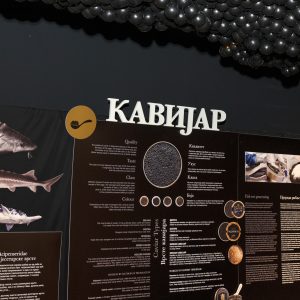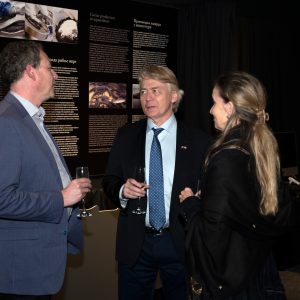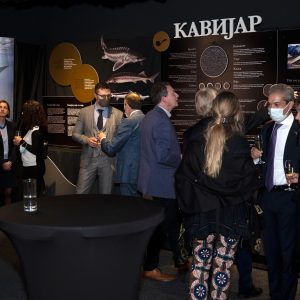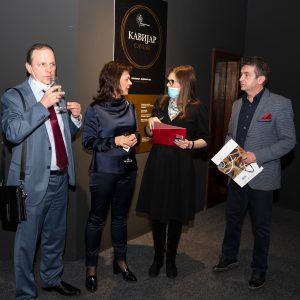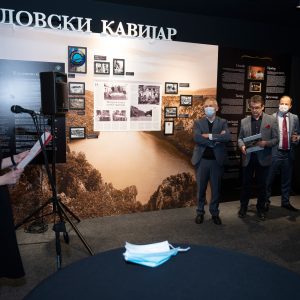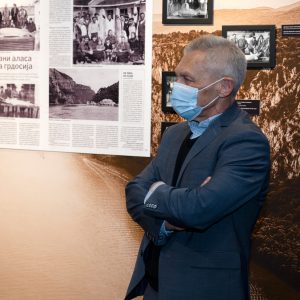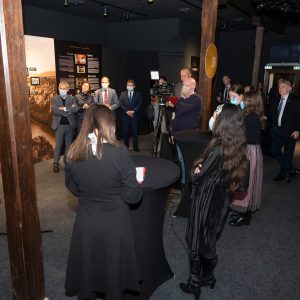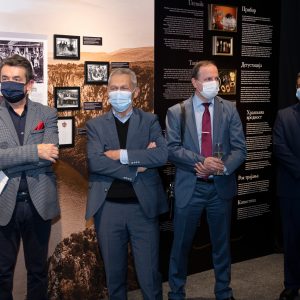Over 30 representatives of the diplomatic corps in Serbia attended the opening of the exhibition titled “Caviar”, authored by Dubravka Vučić, senior ichthyologist and curator at the Gallery of the Museum of Natural History in Belgrade.
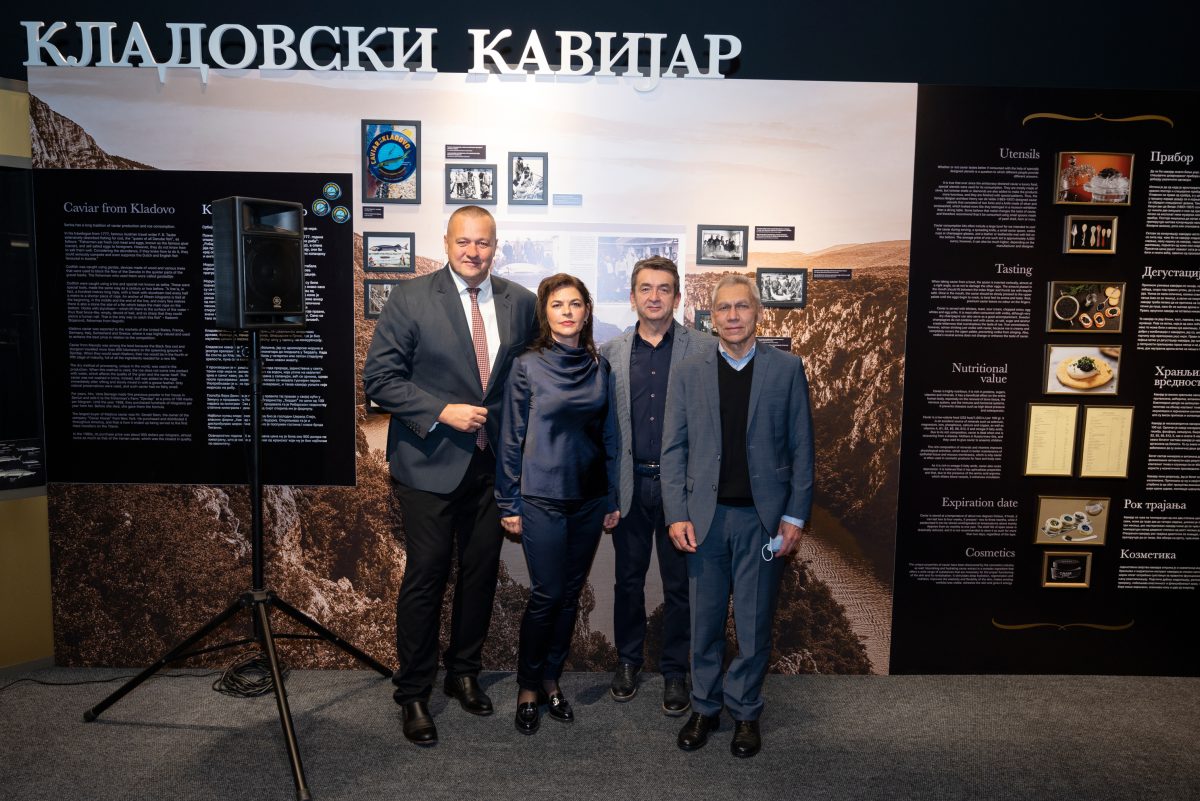
Although “elegance” and “luxury” are the words we usually associate with caviar, this exhibition brings caviar closer to people through its various aspects – from cultural and historical to biological and economic. The exhibition also showcases one of the last specimens of cod caught in the Danube, as well as Adriatic sturgeons from the Bojana River, which are almost extinct in rivers today. One part of the exhibition is also dedicated to the world-famous Kladovo caviar from Serbia.
At the exhibition opening, Slavko Spasić, acting Director of the Museum of Natural History, said that this year, the Museum celebrated its 125th anniversary and added: “Only one story about nature was presented at this exhibition, which is an inexhaustible source of inspiration for us. We hope that our museum collections, which number over 1.6 million exhibits, will get a better space for permanent exhibition in the future. ”
Robert Čoban, President of Color Press Group, which is one of the hosts of this visit, pointed out that it is very important for the media to promote our cultural heritage and ties between Serbia and countries that have diplomatic missions in Serbia, adding:
“In the last month and a half, Diplomacy&Commerce magazine hosted a Walking Dinner with the Mayor of Belgrade and presented part of our rich gastronomic heritage and restaurants. After this, we took you to Kikinda, in the north of Vojvodina, where we presented the cultural and gastronomy heritage of this beautiful town. Last week, it was my pleasure to take you to the Museum of Yugoslavia for the guided tour of the exhibition dedicated to the 60th anniversary of the Non-Alignment Movement. The day after that, at the Princess Ljubica Residence, we had a promotion of our ‘Hello! Travel: Cultural Heritage of Serbia’ magazine.
Today, we are here to see a new exhibition staged by our friends from the Museum of Natural History and to celebrate ties between Serbia and Russia and Serbian and Russian people. The Caviar Story is also a story about the joy of life and this is something that we really need today.”
In his address, the Russian Ambassador to Serbia, H.E. Alexander Botsan-Kharchenko, reminded that although Russia was not the first country that started to consume caviar, its mass production began by order of Empress Catherine the Great in the 18th century. “Soon enough, Russia became known for the caviar of top-notch quality. This exhibition is an event with a human touch that we all need at a time of COVID and geopolitical tensions,” he added.
The Caviar exhibition was made possible with the help of the Republic of Serbia’s Ministry of Culture and Information.
The exhibition will be open until December 2, 2021, at the Gallery of the Museum of Natural History in Belgrade, 5, Mali Kalemegdan.
